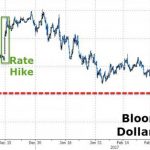Someone emailed the other day asking for my opinion on theories of wave cycles such as Kondratiev cycles. There are numerous different versions of this idea utilized by various market pundits and investors including Robert Precher’s Elliot Wave Theory, Harry Dent’s long wave theories and Ray Dalio’s debt cycle theories. These theories usually assume three key characteristics:
This is a very appealing framework to many people because we see what looks like “cycles” in the economy and the financial markets. They ebb and flow like a sine wave. This is also an appealing model relative to most mainstream macroeconomic general equilibrium models because it doesn’t include some of the unrealistic assumptions that economists use to simplify their models (such as rational expectations or the efficient market hypothesis). In other words, this meshes with the way people actually see the world unfold before them. Unfortunately, the idea of cycles can be misleading and can generate some extremist assumptions about how the future will unfold.
The idea of a “cycle” is very useful, but it’s important to keep these things in the proper context. We exist in a very finite time period which gives rise to recency bias and overstating the importance of seemingly significant events. So, a 10% drop in the stock market feels substantial in a 1 year period, but it is really just a normal event when viewed in a 3, 5 or 10 year time period. Further, the idea of “cycles” gives the impression that the economy and the financial markets move in big extreme waves, but the reality is that economic growth and financial market growth tends to look fairly smooth over long time periods. That is, there is a dominant boring trend in growth. Here’s a log scale of the US stock market going back to 1871:
















Leave A Comment